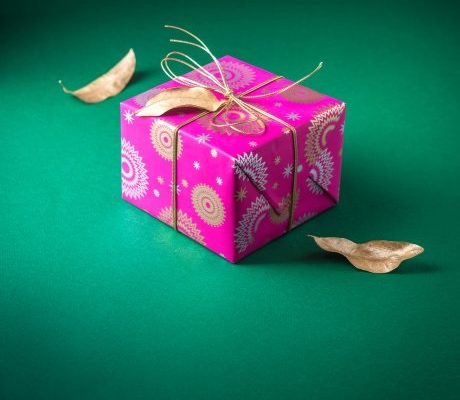Tell us that you’re not excited for the upcoming festive season- Diwali!! There are multiple reasons for you to be super enthusiastic about the Diwali celebration. For starters, the long celebrations stretch beyond different cultures. Right from religious poojas for the spiritual ones to night-long card parties for the youth, the festival of Diwali is here for everyone. And of course, not to forget that it is a week-long celebration!
Here is a detailed list of the five days of the festive occasion that includes their names, significance, and customary rituals:
- Dhanteras (First Day)
Dhanteras or Dhanvantri Trayodashi marks the beginning of the festivities of the Diwali season. The day is solely dedicated to the worship of Sri Dhanvantari, physician of Gods who happens to be an incarnation of Lord Vishnu.
On Dhanteras, Indians consider it shubh to buy gold, precious gems, silver, utensils, and clothes. Purchase of jewels on this auspicious day brings in good luck and prosperity. So, Dhanteras gifts, such as gold or silver coins, dinner sets, barbeque equipment, etc. are appreciated by all on this day.
- Naraka Chaturdashi (Second Day)
Popularly known as Choti Diwali, Naraka Chaturdashi marks the victory of the evil demon, Narak’s killing. On this day, Lord Krishna returns home after defeating Narak who was known to imprison 16,000 daughters of Gods.
In India, everyone celebrates Lord Krishna’s victory at the crack of dawn. They apply aromatic oils before bathing. After a holy bath, they step out of the house wearing new clothes for greeting their loved ones with Diwali gifts. If you have a stringent budget limit, you can easily find Diwali gifts under 500 on online websites.
- Lakshmi Pooja (Third Day)
Brace yourself. It is time to welcome the most significant part of the Diwali celebration- Lakshmi Pooja. On the third day of the festival, Lakshmi Pujan is performed in every Hindu household. The pooja is considered auspicious due to the return of Lord Rama along with Goddess Sita and brother Laxmana from the exile.
On this day, everyone comes together with their family to celebrate the customary rituals- lighting lamps and exchanging Diwali gifts. In addition to this, they decorate their houses with candles, diyas, and fairy lights. Later in the evening, the doors remain wide open to welcome Goddess Lakshmi in the houses.
- Padva (Fourth Day)
The fourth day of Diwali sees the most diverse celebrations across multiple states. While the northern states celebrate it as Govardhan Puja, the rest of the states in Gujarat consider the forth day as their new year. The significance of the fourth day is to commemorate Lord Krishna’s win after defeating Indra.
As a sign of respect towards the victory of Lord Krishna, people build a small hillock out of cow dung of Govardhan Mountain and worship it. Additionally, they also offer Chappan Bhog to honour his victory.
- Bhai Dooj (Fifth Day)
The binge-worthy season comes to an end with the day of siblings- Bhai Dooj. It is the last and the final day of the long Diwali celebration, wherein sisters chant prayers for the protection of their brothers. In addition to this, sisters also give Bhai dooj gifts to them to express their love and gratitude.
The festival of Bhaidooj is quite different in many parts of the country. Due to its diversity, it is known by many names such as Bhau beej, Bhai Phota, Bhai Tilak, and so forth. Nevertheless, the occasion celebrates the unconditional love between siblings across the states of India.
Marking the triumph of the good over the bad, Diwali engulfs everyone in joy and happiness. The five-day-long celebration typically keeps everyone engrossed in it. However, the after-effects of the festival prevail for quite long. So here’s wishing everyone a Happy and safe Diwali. Three cheers to the upcoming festive vibes!


